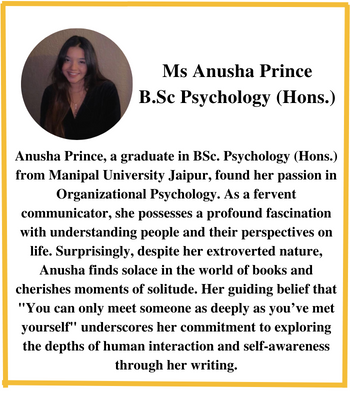Coming across the topic of this month’s issue, my mind really kept going back to how routines have been helpful in my life. May it be a time when I studied hard for my mid-sems or finals, or may it be a time when I had to wake up, go to school or college, and now work. Routines really do instill a happy hormone in us, don’t they?
My personal issue, however, had always been very different. A turbid translation of a routine for me was getting so engrossed in my work that I ticked all the boxes but ended up tired and frazzled to do anything else at all. After being burned out and absolutely tired of the said routine, I realized something had to be changed. I had to focus on—not my work, not my routine (only because I had been giving it my 100%), but my breaks and rest pauses.
Throughout our lives, in small ways, we’ve learned about the importance of breaks. As a school going child, we were given breaks in the form of recess during school hours. Our eye doctors time and time again advise us to take breaks from our screens to prevent digital eye strain, and the biggest standing example is the natural sleep-wake cycle of humans. We all know how crucial sleep is for cognitive function, memory consolidation, and physical health.
Science and psychology have always looked into intentional pauses. Sophie Cho’s research work titled “Give Me a Break! Benefits, Predictors, and Work Related Outcomes of Taking Rest Breaks at Work” gives us an insight into how work performance and job satisfaction increase and fatigue decrease due to the help of intentional rest pauses. Further learning and retention improve through intentional pauses. A huge help in my studies has been the Pomodoro technique. It includes 25 minutes of uninterrupted focus on a task, followed by five minutes of short breaks in-between (intentional rest pause), and a 15-30 minute break is taken after four pomodoros. This technique is used to remove internal and external distraction, and the breaks add a period of rest and rejuvenation for the brain to be recharged and ready to be productive again.
Several companies and huge tech giants like Google and Slack have incorporated intentional rest pauses into their workdays. Within its campuses, Google has installed amenities such as nap pods and meditation areas. These areas are intended to allow employees to recharge both mentally and physically, resulting in enhanced productivity and job satisfaction. These reduce employee stress levels and fatigue and have enhanced overall mental health and productivity. Another famous example is Slack, a commercial communication network that has instituted a policy prohibiting after-hours work. This strategy emphasizes the value of downtime and encourages people to withdraw from work, resulting in a better work-life balance. As a result of this policy, employees have reported higher job satisfaction, less burnout, and increased productivity.
Ways to Incorporate Break Habits In Your Day:
1. Meditation and Mindfulness Exercises:
Mindfulness and meditation are practices for reducing stress through focused breathing. Mindfulness is the practice of being present, of anchoring oneself in the present moment, and of accepting the ebb and flow of one’s thoughts and emotions with a peaceful, non-judgmental awareness.
2. Digital Detox:
After working all day on computers and laptops, take breaks from the screens and rest your eyes and mind. Providing yourself with time to recover from the time spent online gives you time to sit and connect with yourself and the world around you.
3. Social Interaction:
Social interaction has always been a personal favorite. It helps enhance belongingness by reducing feelings of stress and isolation, creating a supportive environment, and enhancing collaboration and teamwork as well. Brainstorming during a rest break can help get better creative outputs, create better results and increase productivity and overall output.
References
Levitin, D. J. (2014). The Organized Mind: Thinking Straight in the Age of Information
Overload. Dutton.
Kabat-Zinn, J. (1990). Full Catastrophe Living: Using the Wisdom of Your Body and Mind
to Face Stress, Pain, and Illness. Delacorte.
Raichle, M. E., MacLeod, A. M., Snyder, A. Z., Powers, W. J., Gusnard, D. A., & Shulman, G. L. (2001). A default mode of brain function. Proceedings of the National Academy of Sciences, 98(2), 676-682.
Sonnentag, S., & Fritz, C. (2007). The Recovery Experience Questionnaire: Development and validation of a measure for assessing recuperation and unwinding from work. Journal of Applied Psychology, 92(5), 1276-1294.
Vohs, K. D., Baumeister, R. F., Schmeichel, B. J., Twenge, J. M., Nelson, N. M., & Tice, D. M. (2014). Making choices impairs subsequent self-control: A limited-resource account of decision making, self-regulation, and active initiative. Journal of Personality and Social Psychology, 94(5), 883-898.
Killingsworth, M. A., & Gilbert, D. T. (2010). A wandering mind is an unhappy mind. Science, 330(6006), 932-932.
Tang, Y. Y., Hölzel, B. K., & Posner, M. I. (2015). The neuroscience of mindfulness meditation. Nature Reviews Neuroscience, 16(4), 213-225.
Berto, R. (2005). Exposure to restorative environments helps restore attentional capacity. Journal of Environmental Psychology, 25(3), 249-259.
About The Author


